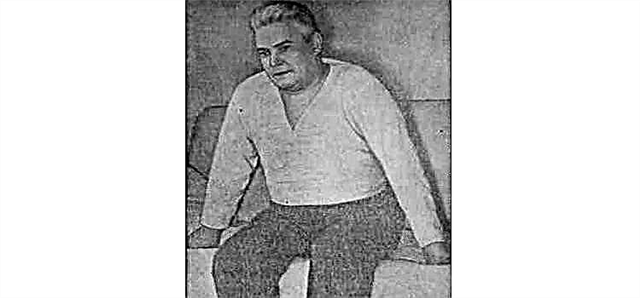Ears congestion is an unpleasant symptom that signals the occurrence of interference in the conduct and processing of sound signals by the hearing organ. Pathological changes can be caused by malfunctions in the main sections of the sound-conducting or sound-receiving system of the auditory analyzer. Hearing loss can be triggered by exogenous or endogenous factors.
 If the ear is blocked after sleep, it is necessary to be examined by an otolaryngologist.
If the ear is blocked after sleep, it is necessary to be examined by an otolaryngologist.
The periodic occurrence of a feeling of congestion can be a consequence of inflammatory processes in the mucous membranes of the upper respiratory tract.
In rare cases, pathology is a symptom of the development of benign or malignant tumors in the middle ear cavity.
Timely diagnosis and treatment of the disease prevents the occurrence of serious complications that lead to the development of hearing loss or deafness.
Pathogenesis
A key cause of ear congestion is a deformity (stretching) of the ear membrane. When conducting sound waves, it experiences vibrations, as a result of which the sound is amplified many times over. Due to excessive stretching, the membrane does not function as a resonator, which leads to a weakening of sound signals and a feeling of congestion in the ears.
Large differences in external and internal pressure on the ear membrane can lead to the appearance of perforated holes in it.
The deformation of the tympanic membrane is most often associated with the occurrence of a difference in air pressure in the outer and middle ear. Subsequently, the membrane is either pulled into the ear cavity, or protrudes into the external auditory canal. Stretching it inevitably leads to problems in conducting and processing sound signals, which becomes the cause of an unpleasant symptom.
Etiology
Why does ears clog up after sleep? Discomfort associated with hearing impairment immediately after waking up may be the result of exposure to exogenous factors or colds. In most cases, an unpleasant symptom occurs for the following reasons:
- runny nose - the accumulation of mucus in the nasopharynx leads to blockage of the auditory canals, as a result of which the pressure in the ear cavity decreases. For this reason, the eardrum is literally pulled into the ear cavity, which creates a feeling of congestion;
- arterial hypertension - a sharp change in body position contributes to an increase in blood pressure, entailing stretching of the walls of blood vessels. Subsequently, there is swelling in the mucous membrane of the middle ear, which entails hearing loss;
 sulfur plug - blockage of the external auditory canal with earwax provokes hearing impairment and a feeling of pressure on the eardrum;
sulfur plug - blockage of the external auditory canal with earwax provokes hearing impairment and a feeling of pressure on the eardrum;- sensorineural hearing loss - impaired microcirculation of blood leads to a deterioration in the trophism of soft tissues and the auditory nerve, which as a result leads to malfunctions in the processing of auditory signals entering the ear labyrinth;
- eustachitis - edema of the mucous membrane of the auditory tube contributes to the narrowing of the inner diameter in it and, as a result, impaired ventilation of the tympanic cavity. The emergence of a vacuum in the middle ear leads to the retraction of the tympanic membrane inside the ear, as a result of which hearing is reduced;
- serous otitis media - catarrhal processes in the mucous membranes of the organ of hearing provoke the accumulation of fluid in the ear cavity, which interferes with the normal conduct of sound signals;
- non-observance of hygiene rules - the ingress of water into the external auditory canal leads to the emergence of obstacles to the passage of sound through the ear membrane and auditory bones, as a result of which congestion occurs.
Untimely treatment of inflammatory processes in the organ of hearing can cause the development of persistent hearing loss.
Special exercises
In case of sudden discomfort due to ear congestion, it is necessary to eliminate the difference between external and internal pressure on the eardrum. If the cause of the appearance of an unpleasant symptom is not due to pathological changes in the mucous membranes of the ENT organs, experts recommend performing several simple exercises:
- with your mouth closed and your nostrils pressed against the nasal septum, try to exhale through your nose;
- pinching the nostrils with your fingers, make 5-6 swallowing movements;
- tightly closing your nose and mouth, push the lower jaw forward several times.
During the exercise, the muscles responsible for opening the mouth of the Eustachian tube contract. The restoration of the aeration function of the auditory canal promotes the flow of air into the ear cavity. Thus, excessive external pressure on the ear membrane is eliminated, which makes it possible to stop the unpleasant symptom.
Treatment principles
Inflammatory processes in the ear most often occur due to the development of nonspecific pathogens in the mucous epithelium of the tympanic cavity. Ear pathology is often secondary and develops against the background of an infectious lesion of the nasopharynx. With the progression of the disease, ear congestion often occurs, which is caused by edema of the mucous membranes and a violation of the drainage function of the Eustachian tube.
What to do if ear is blocked after sleep? The principles of eliminating an unpleasant phenomenon are completely determined by the main cause of its occurrence. The following methods can be used to eliminate ear congestion:
- physiotherapy - aimed at restoring normal blood microcirculation in the tissues of the auditory analyzer. To improve the trophism of tissues and restore the functions of the Eustachian tube, the methods of heat therapy, phototherapy and the technique of blowing the auditory tubes (according to Politzer, according to the Valsalva method) can be used;
- drug treatment - contributes to the elimination of pathogenic flora that provokes inflammatory reactions in the middle ear and Eustachian tube. As part of conservative treatment, antiphlogistic, local anesthetic, antibacterial and antifungal drugs are used;
- surgical intervention is a surgical treatment that is used in the development of serious complications caused by mineralization of the auditory ossicles, overgrowth of cholesteat, etc.
The method of eliminating discomfort in the ear can only be determined by a specialist after considering the results of the examination tests and studying the patient's anamnesis.
Drug overview
 In the early stages of development of ear diseases, adequate drug treatment is required, which will help to eliminate inflammatory processes in the organ of hearing. As part of pharmacotherapy for the treatment of serous otitis media, tubo-otitis (eustachitis), myringitis (inflammation of the tympanic membrane), the following drugs can be used:
In the early stages of development of ear diseases, adequate drug treatment is required, which will help to eliminate inflammatory processes in the organ of hearing. As part of pharmacotherapy for the treatment of serous otitis media, tubo-otitis (eustachitis), myringitis (inflammation of the tympanic membrane), the following drugs can be used:
- "Flemoklav Salyutab" is an antibacterial drug, the components of which destroy the cell walls of microbes that provoke inflammation in the mucous membranes of the upper respiratory tract;
- "Tsifran" is an antimicrobial agent that disrupts the reproduction of pathogenic bacteria; relieves inflammation and pain in the foci of inflammation;
- "Otipax" - combined action ear drops that relieve inflammation and pain in the affected tissues;
- Otrivin - nasal vasoconstrictor drops that eliminate swelling in the nasopharynx and the mucous membrane of the Eustachian tube;
- "Loratadin" is an antiallergic agent that relieves the manifestations of allergic rhinitis and swelling of the mucous membranes of the ENT organs.
Abuse of vasoconstrictor drops can cause irreversible changes in the mucous epithelium, leading to tissue necrosis.

 sulfur plug - blockage of the external auditory canal with earwax provokes hearing impairment and a feeling of pressure on the eardrum;
sulfur plug - blockage of the external auditory canal with earwax provokes hearing impairment and a feeling of pressure on the eardrum;

